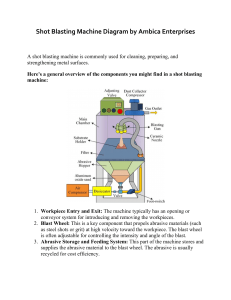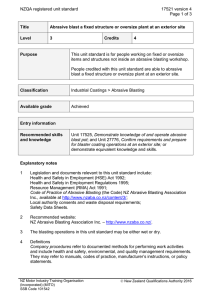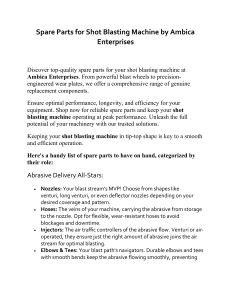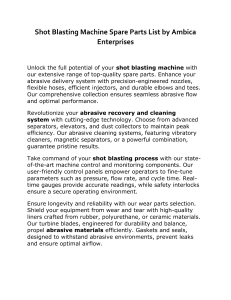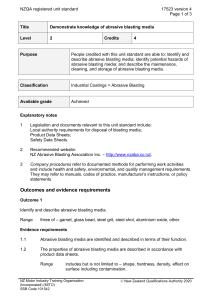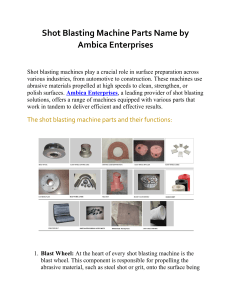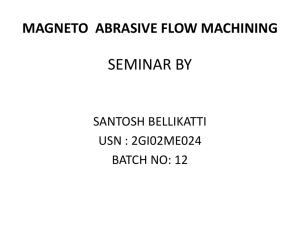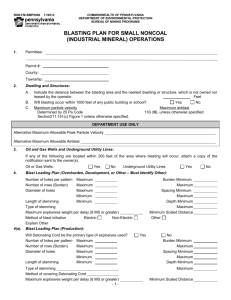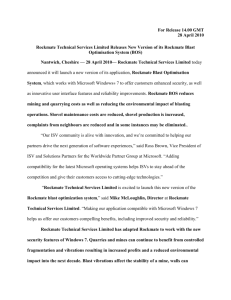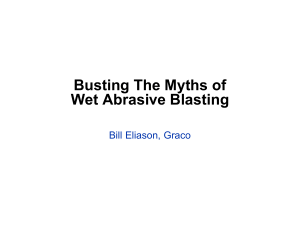Changing Abrasives leads to increased productivity
advertisement
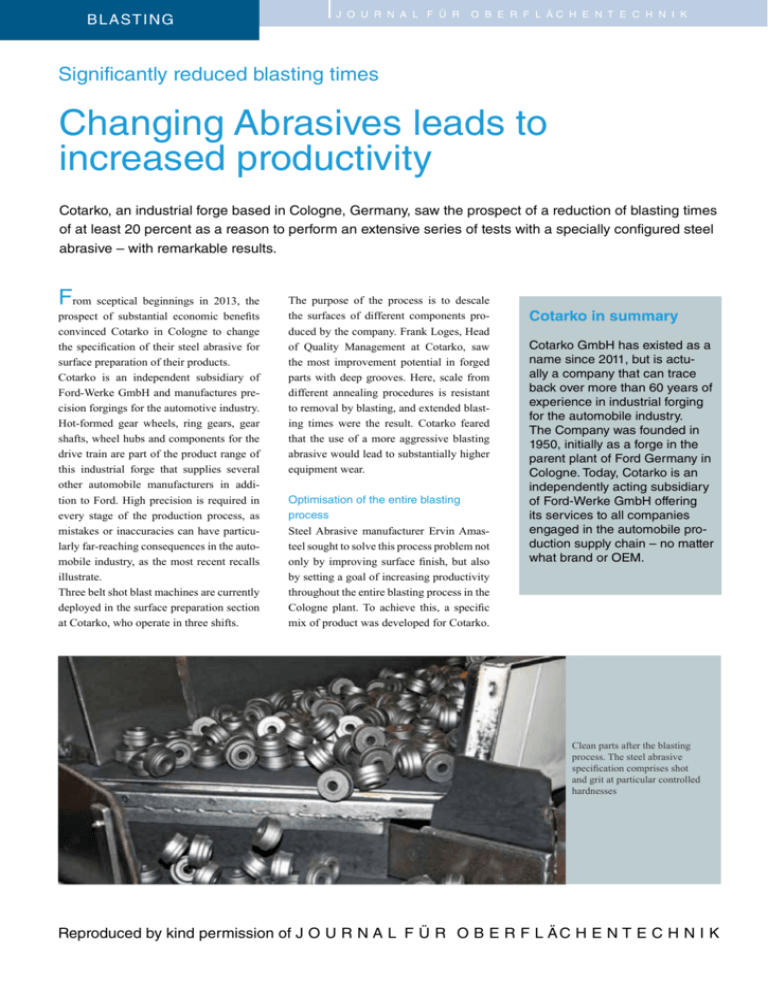
B L AST I N G J O U R N A L F Ü R O B E R F L ÄC H E N T E C H N I K Significantly reduced blasting times Changing Abrasives leads to increased productivity Cotarko, an industrial forge based in Cologne, Germany, saw the prospect of a reduction of blasting times of at least 20 percent as a reason to perform an extensive series of tests with a specially configured steel abrasive – with remarkable results. F rom sceptical beginnings in 2013, the prospect of substantial economic benefits convinced Cotarko in Cologne to change the specification of their steel abrasive for surface preparation of their products. Cotarko is an independent subsidiary of Ford-Werke GmbH and manufactures precision forgings for the automotive industry. Hot-formed gear wheels, ring gears, gear shafts, wheel hubs and components for the drive train are part of the product range of this industrial forge that supplies several other automobile manufacturers in addition to Ford. High precision is required in every stage of the production process, as mistakes or inaccuracies can have particularly far-reaching consequences in the automobile industry, as the most recent recalls illustrate. Three belt shot blast machines are currently deployed in the surface preparation section at Cotarko, who operate in three shifts. The purpose of the process is to descale the surfaces of different components produced by the company. Frank Loges, Head of Quality Management at Cotarko, saw the most improvement potential in forged parts with deep grooves. Here, scale from different annealing procedures is resistant to removal by blasting, and extended blasting times were the result. Cotarko feared that the use of a more aggressive blasting abrasive would lead to substantially higher equipment wear. Optimisation of the entire blasting process Steel Abrasive manufacturer Ervin Amasteel sought to solve this process problem not only by improving surface finish, but also by setting a goal of increasing productivity throughout the entire blasting process in the Cologne plant. To achieve this, a specific mix of product was developed for Cotarko. Cotarko in summary Cotarko GmbH has existed as a name since 2011, but is actually a company that can trace back over more than 60 years of experience in industrial forging for the automobile industry. The Company was founded in 1950, initially as a forge in the parent plant of Ford Germany in Cologne. Today, Cotarko is an independently acting subsidiary of Ford-Werke GmbH offering its services to all companies engaged in the automobile production supply chain – no matter what brand or OEM. Clean parts after the blasting process. The steel abrasive specification comprises shot and grit at particular controlled hardnesses Reproduced by kind permission of J O U R N A L F Ü R O B E R F L Ä C H E N T E C H N I K The specification was developed consisting of shot and grit in equal parts, and to carefully controlled hardnesses. The round shot offers a higher rebound rate compared with the low-carbon abrasive that had previously been specified. In particular, scale removal is improved on parts with detailed internal surfaces. Likewise, the grit is especially effective in achieving efficient and quick results on multi-sided parts. Blasting performance and resulting blade and equipment wear were surveyed and documented over a two month period. Since initially the new abrasive was implemented on one machine only, representative data concerning equipment wear, abrasive consumption and blasting times could be collected and compared to the machines working alongside using low carbon shot. Reduction in blast higher than expected Optimisation process continues Since January, Cotarko has been operating three blasting machines with the new abrasive mix. Together with Ervin Amasteel staff Cotarko is exploring further possibilities for optimisation. As part of its control of the process Ervin examines the blast machines during each visit. In the process not only the operating mix is assessed for its quality, but machine configuration is also verified, for example ensuring optimum airflow via the waste removal system. Direct contact between the abrasive producer and machine operators also Frank Loges, Head of Quality Management at Cotarko times Any initial concerns that the high-carbon product mix might have a significant impact upon system wear soon proved to be unfounded. A reduction of blade life of 15 percent had been predicted, however in practice the true effect was significantly lower. Moreover, an improvement in blast times was even more pronounced than expected. The average blast time on all parts, which had been targeted at 20 percent, was in fact 30 percent. When abrasive consumption and system wear was compared to the number of the blasted parts per year, the tests showed that abrasive consumption was also reduced. “Due to the increase of productivity that we can achieve by using the new steel abrasive, Cotarko can postpone investment in another blast machine”, says Loges about the positive side effect. Taking all results into account, Cotarko estimated a savings potential per machine of approx. 60000 euros per year. Loges was also very satisfied with the quality of the processed surfaces: “Some of these good results couldn’t have been achieved with the other, far softer blasting abrasive, even at longer blasting times.” A Cotarko component after a blast time of five minutes with a low-carbon abrasive (left) and after the same blast time with Ervin special abrasive mix (right) Initial state before the blast process (right) and cleaning result after the blast process (left) improves appreciation of key cost drivers and where process costs may be further reduced. News travels fast. Neighbouring Ford Werke GmbH is currently also examining a possible use of the abrasive. Contact Ervin Amasteel George Henry Road Tipton, West Midlands DY4 7BZ info@ervinindustries.com www.ervinindustries.eu Reproduced by kind permission of J O U R N A L F Ü R O B E R F L Ä C H E N T E C H N I K
